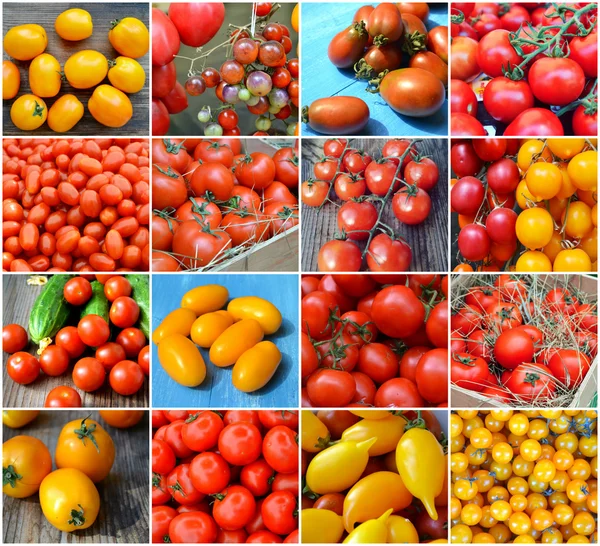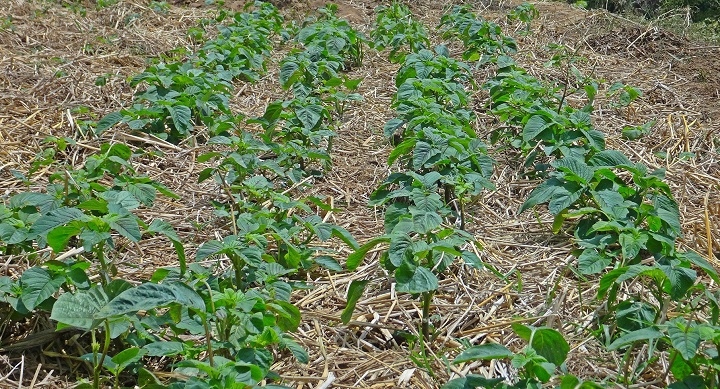Are you looking for the best loan securities in Kenya to finance your farming or business venture? Struggling to access credit because you don’t have a land title? You’re not alone and there’s good news. Kenyan law now recognizes a wide range of assets as valid collateral, opening doors that were previously closed to many farmers.
What Categories of Assets Are Typically Provided as Security to Lenders in Kenyan Financing?
Security can generally be taken over all asset classes, and in agriculture specifically, collateral isn’t limited to land deeds. Thanks to Kenya’s Movable Property Security Rights Act (2017), lenders can now accept various types of collateral. This includes livestock, crops, and machinery. They can also accept warehouse receipts and equipment. Additionally, financial instruments and intellectual property are considered as loan security. This legislative framework created a central electronic registry. It explicitly allows “household goods, crops, live animals and even intellectual property” to be pledged. This system helps borrowers who lack traditional land or motor-vehicle titles access the credit they need.
Whether you’re a smallholder farmer with a few dairy cows, a mid-scale producer with stored maize in a certified warehouse, or an agri-business owner with processing equipment, you have assets that can work as collateral. Here’s how to make various assets work for you and unlock the financing your farm needs to grow.
Types of Loan Security Assets under MPSR
Figure 2.7 Graphical Representation of Collateral Assets Under MPSR Credit (July–June FY 2023/24)
Understanding Your Consumer Rights
Kenya’s agricultural lending landscape transformed dramatically with the Movable Property Security Rights Act (2017). This groundbreaking legislation created a central electronic registry known as the e-Collateral Registry. It explicitly allows “household goods, crops, live animals, and even intellectual property” to be pledged as security. The Act defines tangible assets to include crops, machinery, and livestock. It permits a security right to encumber any movable asset to secure any obligation.
This expansion of acceptable collateral specifically aims to help borrowers who lack land or motor-vehicle titles to access credit. For Kenya’s farmers, this means assets you already own and use daily can now unlock the financing needed to expand operations, purchase inputs, or weather difficult seasons.
1. Livestock
Under the Movable Property Act, live animals qualify as tangible assets that lenders will accept as collateral. The numbers are compelling. Business Registration Services (BRS) data show a dramatic shift in collateral preferences. Pledges of livestock and financial securities grew by 53.6% in the year ending June 2025. Meanwhile, household goods have declined. This trend proves that lenders are warming to livestock as viable security.
Making livestock work as collateral requires:
First, maintain comprehensive records. Keep up-to-date breeding records, vaccination certificates, insurance policies, and market value estimates. Banks and SACCOs often require evidence of ownership, health status, and productive capacity before accepting animals as security. These documents transform your herd from simple farm animals into documented assets with provable value.
Second, insure high-value animals. Livestock insurance protects both you as the farmer and your lender. Innovative products like Risk Contingent Credit models embed insurance directly into the loan structure—if drought triggers a payout, your repayment obligation is automatically reduced. This approach effectively shares weather risk between you, the lender, and the insurer.
Third, diversify your species. A mix of dairy cows, goats, or poultry reduces disease and market-price risk. Lenders favor diversified herds because they spread risk across multiple commodities. If disease affects your cattle, your goat enterprise continues generating income for loan repayment.
2. Farm Equipment and Machinery
Tractors, irrigation systems, greenhouse structures, and processing machinery all qualify as collateral when properly documented. Without proof of ownership, however, lenders may heavily discount the value or reject equipment altogether.
To make equipment bankable:
Compile purchase documentation including invoices, import documentation, and ownership certificates. These papers prove you legitimately own the assets and establish their original value.
Show maintenance history through logs and service receipts. Well-maintained equipment retains value far better than neglected assets. Maintenance records demonstrate care and reliability—qualities lenders appreciate when evaluating collateral.
Insure and secure your equipment. Equipment insurance protects against theft or accidental damage, providing lenders additional comfort. Use secure storage facilities and mark assets with serial numbers to prevent ownership disputes. These steps protect your investment while making lenders more confident in accepting machinery as security.
3. Warehouse Receipts
The Warehouse Receipt System (WRS) Act 2019 and its regulations created a legal framework that makes stored commodities negotiable and usable as collateral. Warehouse receipts are documents that prove ownership of stored commodities and can be transferred or pledged to secure loans.
How the system works:
Use only certified warehouses. Receipts from licensed facilities accredited by the WRS Council are the only ones lenders recognize. The 2024 FSD feasibility study noted that most smallholders remain unaware of the WRS, but those who were sensitized valued it highly for both safe storage and access to finance.
Store adequate quantities. Bankers prefer larger volumes because storage and inspection costs are high. The FSD study reported that only 56% of rice farmers store at least a quarter of their harvest. Aggregating produce through cooperatives helps meet the minimum volumes that make warehouse receipts economically viable for both farmers and lenders.
Monitor market prices strategically. Use receipts to store produce when prices are low and sell when they rise. Show lenders your expected price trends and hedging strategies—this demonstrates business acumen that strengthens your loan application.
Insure stored crops against fire, theft, and pest damage. Warehouse insurance is critical, and lenders may require it as a condition of accepting receipts as collateral.
4. Future Crop Yields Through Contract Farming
Contract farming arrangements allow you to pledge future harvests as loan security. When off-takers guarantee purchase and lenders see a committed buyer, the perceived risk drops significantly.
Document the age, variety, and expected yields of your crops to show lenders stable income streams. For permanent crops like macadamia, avocado, or tea, these projections can span multiple years and significantly enhance your borrowing capacity. Since permanent crops are immovable and enhance land value, they strengthen your overall security profile.
5. Leasehold Agreements: Farming Land You Don’t Own
You don’t need to own land outright to use it as collateral. Properly documented leasehold agreements on land you’re renting can work as security, especially when combined with improvements or permanent crops.
Register any improvements such as irrigation systems or terracing. Investments that enhance productivity—soil fertility programs, water conservation structures, greenhouse installations—increase the collateral value. Keep receipts and before/after photos to document these enhancements. Consider professional valuation if you’re seeking a large loan; valuers’ reports strengthen negotiations and give lenders confidence in the asset’s worth.
6. Financial Assets and Intellectual Property
According to BRS data, pledges of shares and bonds more than doubled to 14,245 items in 2025. Banks accept financial securities readily because they’re liquid and easily valued.
What qualifies:
Shares, bonds, and savings accounts can all serve as collateral. Provide statements from your broker and evidence of current market values. Some lenders allow fixed deposits or savings accounts to be placed under lien until the loan is repaid—the funds remain yours but are frozen as security.
Intellectual property represents an emerging frontier. The Movable Property Act explicitly includes patents and trademarks as acceptable collateral. While less common in traditional farming, agri-processing businesses or technology start-ups can pledge IP rights once they are registered and professionally valued.
7. Group Guarantees Through Cooperatives and SACCOs
Group guarantees provide a powerful alternative where members collectively secure each other’s loans. This approach offers multiple benefits:
It reduces individual collateral burdens by spreading risk across the membership. Cooperatives often negotiate group loans with better terms than individual farmers could obtain alone. Collective marketing and storage improve bargaining power and facilitate access to warehouse receipts through aggregated produce volumes. Finally, peer accountability—knowing fellow members depend on your repayment—creates social pressure that lenders trust.
8. Digital Collateral Solutions & Innovations
Kenya is pioneering alternatives that reduce reliance on physical assets altogether, opening credit access to farmers who lack traditional collateral:
Risk-Contingent Credit products like ShambaShield integrate weather-risk insurance directly into loans. The embedded insurance component reduces your repayment obligation when adverse weather strikes. This effectively substitutes for traditional collateral by sharing risk among borrower, lender, and insurer.
Climate-Credit Scoring Tools assess creditworthiness by incorporating climate risk data. Farmers who adopt climate-smart practices and insure their crops achieve higher scores and better loan terms, rewarding good farming practices with improved financial access.
AI-Driven Alternative Data Models like the Farmers Credit Scoring Model developed by Pathways Technologies use crop yields, market sales, and payment behavior instead of conventional credit history. AI models trained on data from millions of farmers allow cooperatives and SACCOs to make faster, fairer lending decisions. This approach can benefit over 20,000 smallholders with reduced collateral requirements.
Bundled Digital Advisory Services deliver agro-advisories and financial education via mobile phones, improving both productivity and creditworthiness while building the financial literacy that lenders value.
Making Your Assets Bankable: The Action Plan
Regardless of which assets you choose to pledge, certain steps make them more acceptable to lenders:
- Organize your records. Maintain accurate financial statements, farm production records, and asset registers. Lenders and digital scoring tools rely on verified data. Without records, even valuable assets may be heavily discounted.
- Register your security rights. After choosing collateral, file a notice in the e-Collateral Registry established under the Movable Property Act. Registration prevents multiple pledges on the same asset and reassures lenders of legitimate ownership.
- Obtain professional valuations. Engage certified valuers for high-value collateral. Update valuations periodically, especially when commodity prices or exchange rates fluctuate significantly.
- Insure strategically. Weather-indexed insurance for crops and livestock insurance protect your collateral and demonstrate risk management sophistication. Risk-contingent credit products integrate insurance automatically.
- Diversify your collateral package. Combining land, livestock, equipment, and financial assets spreads risk. Presenting a diversified security package can help negotiate better interest rates and longer repayment terms.
- Communicate openly with lenders. Discuss your collateral strategy and repayment plan transparently. Provide evidence of good practices—diversification, climate-smart farming techniques, participation in digital platforms—and explain how these reduce lending risk.
Conclusion: Your Path Forward
Accessing a secured agricultural loan in Kenya no longer means handing over your land title. Laws and innovations now allow farmers to pledge movable assets—livestock, crops, equipment, financial instruments, and even intellectual property. Market data confirm that borrowers are indeed shifting toward movable collateral, with livestock and shares showing the strongest growth.
Meanwhile, warehouse receipt systems provide liquidity for stored harvests, and digital credit-scoring platforms offer pathways for those who lack traditional assets entirely. By documenting your assets professionally, registering security rights, insuring against risks, and adopting climate-smart practices, you can make a compelling case to lenders and secure financing on favorable terms.
The key is understanding which assets you possess, how to present them effectively, and working with lenders who understand agricultural cycles and asset types beyond traditional property titles. The agricultural finance landscape is evolving rapidly—position yourself to benefit from these changes.



